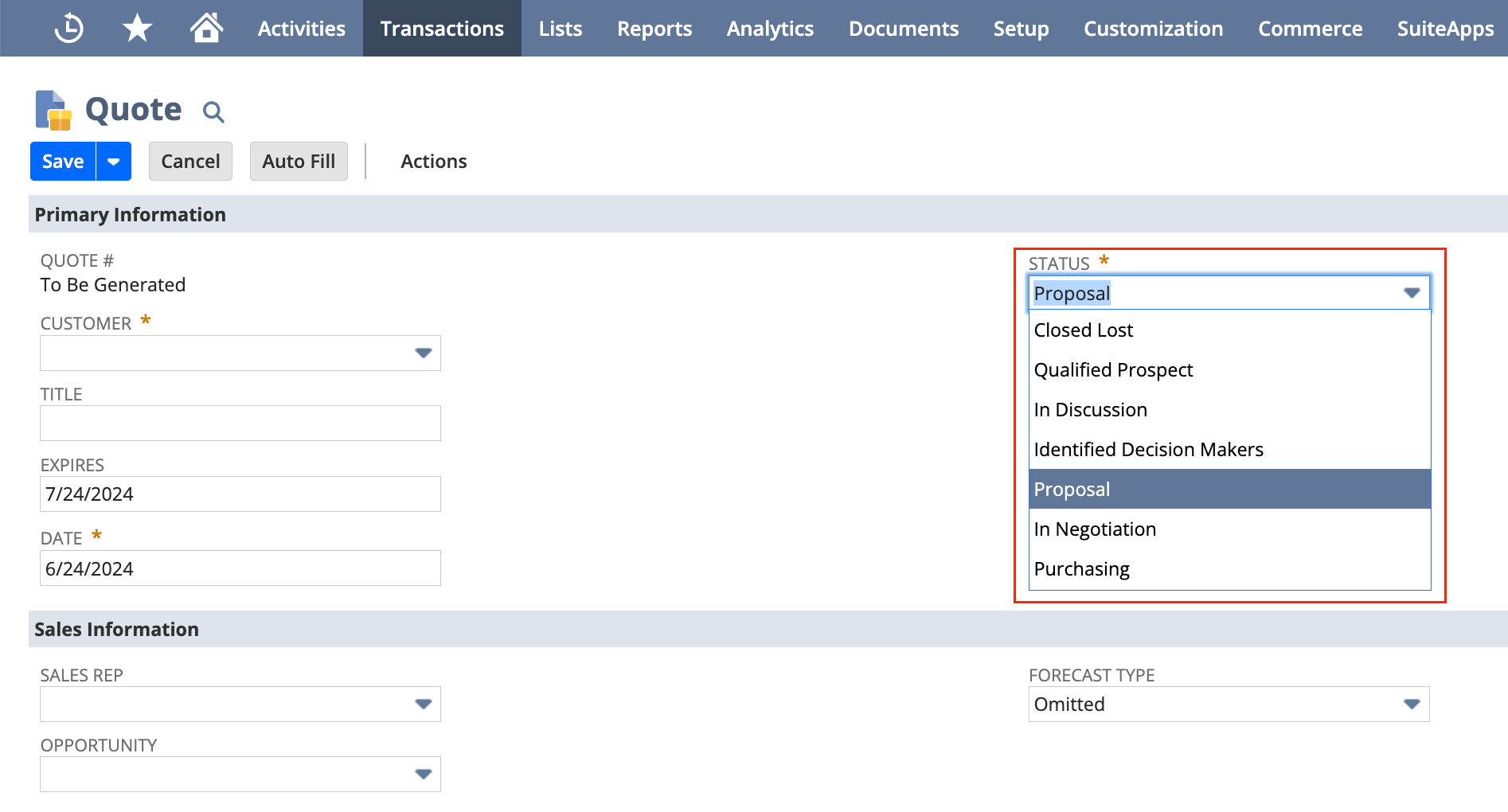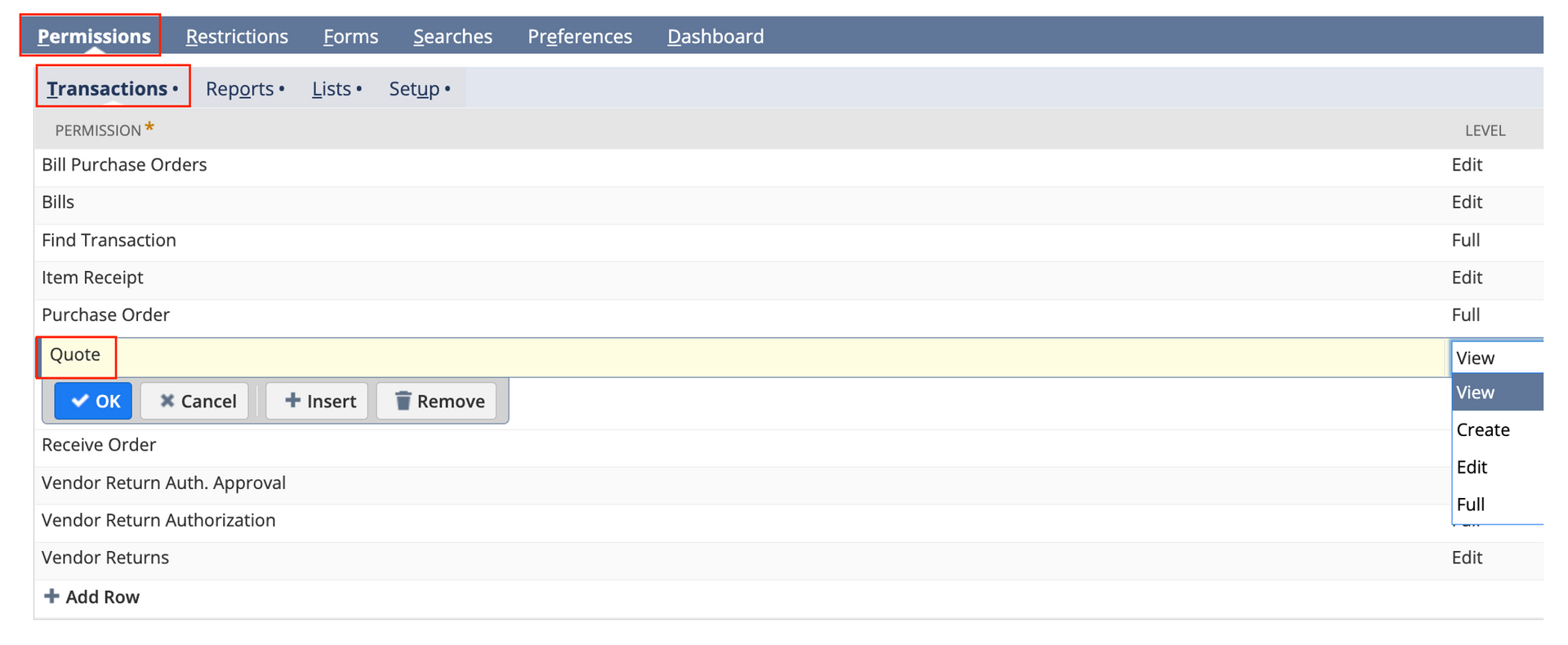Get Your Sales Process Together: Track the Status of Your Quotes to Close More Deals
You'll never maximize your selling potential if you lose track of sales estimates. The right software makes it easy.
The sales process is straightforward. You attract a lead, entice them with service or product benefits, answer questions, offer a quote, and hopefully, make a sale.
Yet, according to HubSpot, the average sales close rate is only 29%, meaning things can go wrong quickly. The process is especially tenuous in the quoting phase. You can lose a customer in a flash if the quote takes too long or contains an error, and the likelihood of this happening multiplies when you’re juggling several at once. That’s why you must track the status of a quote.
We know how challenging it can be to manage quotes while courting potential leads. It’s chaos. NetSuite Enterprise Resource Planning (ERP) software can help your company generate quotes quickly, monitor their statuses, manage approval workflows, and convert quotes to sales orders.
SuiteDynamics works with NetSuite to customize and implement ERP software. We can help your company create a custom process that tracks the status of your quotes from generation to completion and helps convert them into sales orders. You’ll have a fast, accurate process that makes customers happy and closes deals.

What Is the Status of a Quote?
A quote status refers to the current stage or condition of a sales quotation, an official document or offer a seller provides to a potential buyer outlining the price and terms for products or services.
The status of a quote can indicate phases such as 'Draft,' 'Sent,' 'Viewed,' 'Accepted,' 'Rejected,' or 'Expired,' among others.
“[A quote’s status] offers useful insights into the development of a deal and assists both buyers and sellers in keeping track of the situation,” Shem Nation explains in an article for BlueNotary. “Whether it’s a pending, accepted, rejected, or expired quote, understanding its status is crucial for effective sales management.”
Sales teams use these statuses to track and manage proposals, ensuring they follow up appropriately, measure the interest of potential clients, and maintain an organized sales pipeline. By monitoring quote statuses, businesses can enhance sales strategy, improve customer relations, and ultimately, drive conversions.
The Quoting Process in NetSuite
A NetSuite ERP offers several native and add-on tools that boost efficiency and accuracy in the sales process so reps have a better chance of closing deals. Here’s how the process works in the system.
1. Creating a New Quote
The quoting process in NetSuite begins when a user creates a new quote. You can do this manually by navigating to the Sales tab and selecting Create Estimate or through automated workflows integrated with CRM data. To create the quote, you must enter details such as customer information, products or services, quantities, and pricing.
NetSuite’s Configure, Price, and Quote (CPQ) add-on module also allows customers to create quotes by selecting features and options through customer-facing software. It uses customizable business rules to ensure these configurations are accurate.
According to HubSpot, 64% of surveyed B2B sales professionals provide buyers with self-service tools like these to help guide purchase decisions, and 85% believe it’s effective. Additionally, sales reps who offer self-service tools are 47% more likely to exceed their goals this year than those who don’t.

2. Entering Customer Information
Accurate customer information is critical for the quoting process. According to a 2020 Docusign report, 45% of surveyed businesses manually transferred data from quotes into other systems using copy and paste, inviting untold errors.
Instead, NetSuite allows you to select existing customers from the database or enter new customer details. This includes contact information, billing and shipping addresses, and relevant customer notes.
3. Adding Items to the Quote
You can add items to the quote by selecting products or services from the inventory. NetSuite's inventory management system is integrated with the quoting process, ensuring real-time stock levels and pricing visibility. You can specify quantities, apply discounts, and include additional notes or custom terms for each item.
4. Setting Pricing and Discounts
NetSuite provides flexible pricing options, including standard pricing, customer-specific pricing, and volume discounts. Users can manually adjust prices or apply predefined discount rates. The system also supports promotional pricing and the ability to calculate taxes automatically based on the customer’s location.
5. Approval Workflow
Once you’ve created the quote, you can pass it through an approval workflow. NetSuite allows you to set up customized approval processes based on the quote amount, customer type, or other criteria. This capability ensures the appropriate personnel reviews all quotes before they’re sent to the customer.
6. Sending the Quote to the Customer
After approval, you can send the quote to your customer directly from NetSuite. The system supports various communication methods, including email and PDF generation. Customers will receive a professional-looking document outlining all the quote details, which they can review and approve.
7. Converting the Quote to a Sales Order
When a customer approves the quote, you can easily convert it into a sales order within NetSuite. This seamless transition eliminates the need for duplicate data entry and reduces the error risks. The sales order can then proceed through the order fulfillment and billing processes.
SuiteDynamics experts can demo the system for you so you can see the process for yourself. Schedule a free consultation to discuss your sales needs and how our team can meet them with a custom NetSuite solution.
Benefits of Using NetSuite for Quoting
NetSuite ERP software advances the sales process in various ways, equipping companies like yours to close more deals. Its benefits include:
1. Accuracy and Efficiency
NetSuite's quoting process ensures all quotes are accurate and consistent. Integrating inventory management and pricing data reduces error risks and ensures quotes reflect the latest information.
2. Customization and Flexibility
NetSuite offers extensive customization options, allowing organizations to tailor the quoting process to specific needs. Users can configure custom fields, approval workflows, and pricing rules to align with business requirements.
3. Improved Customer Experience
Businesses can enhance the customer experience by providing timely and accurate quotes. NetSuite’s ability to quickly convert quotes into sales orders streamlines the sales process, making it easier for customers to do business with you.
4. Real-Time Visibility
NetSuite provides real-time visibility into the status of quotes, helping sales teams stay informed and proactive. This visibility extends to inventory levels, pricing, and customer data, enabling better decision-making and forecasting.
You can learn more about these benefits in your free consultation with SuiteDynamics experts.
Step-by-Step Instructions for Updating Quote Statuses in NetSuite
1. Once you've logged in, look for the Sales or Transactions tab in the main navigation menu.
2. Click on the Quotes or Estimates link. The name may vary depending on your NetSuite configuration.

3. Use the search bar or filters to locate the specific quote.
a. You can search by quote number or customer name.
4. Click on the quote you wish to update to open its details.
5. Click Edit (usually located at the top or bottom of the page) to enable modifications to the quote.
6. Click on the drop-down menu next to the Status field. This field might be labeled differently based on your NetSuite customization (e.g., "Estimate Status").
7. Select the appropriate status from the list. Common statuses include "In Discussion," "In Negotiation," and "Proposal," or you can use custom statuses specific to your organization.
a. After selecting the new status, review other details if necessary.

8. Click Save.
9. You will be redirected back to the quote details page.
10. Check the Status field to verify that it has been updated correctly.
11. If required, notify relevant parties of the status update. You can do this via NetSuite's communication feature, by sending an email manually, or by adding a workflow to automatically send an email when a quote is approved.
Additional Tips
- Permissions: Ensure you have the necessary permissions to edit quotes. If you don't have the required access, contact your NetSuite administrator.

2. Customization: The exact labels and navigation paths might differ based on your company's specific NetSuite customization. Adjust the steps accordingly.
3. Training: If you're new to NetSuite, consider completing a training module on navigating and using the system effectively. Or talk to our team about a custom training program that will help your team navigate the entire system.
SuiteDynamics experts can explain more about the system and how it can help your specific needs during your free consultation. We’ll ensure you get a robust system with everything you need to smash sales goals.
Perfect Your Sales Process and Close More Deals
If you’re in sales, the status of a quote is crucial. You must know:
- What you’ve generated
- What you’ve approved
- What you’ve sent to potential customers
- What customers have accepted
Otherwise, you’ll lose track of where each lead is in the quoting process, and you’ll forget to respond to quote requests or leave them open indefinitely. You’ll lose countless revenue dollars through sheer mismanagement.
We want you to make every possible sale. SuiteDynamics experts can help you increase quoting efficiency and accuracy with a NetSuite ERP platform. The software integrates with your inventory and pricing systems to reduce error risks, and it offers real-time visibility into quote status so you can track estimates from generation to sales order conversion.
Schedule a free consultation to learn more about NetSuite’s quoting capabilities so you can tighten up your sales process and close more deals.
We pull information from NetSuite material, SuiteDynamics experts, and other reliable sources to compose our blog posts and educational pieces. We ensure they are as accurate as possible at the time of writing. However, software evolves quickly, and although we work to maintain these posts, some details may fall out of date. Contact SuiteDynamics experts for the latest information on NetSuite ERP systems.
Part of this text was generated using GPT-3, OpenAI’s large-scale language-generation model. After generating the draft language, our team edited, revised, and fact-checked it to ensure readability and accuracy. SuiteDynamics is ultimately responsible for the content of this blog post.












